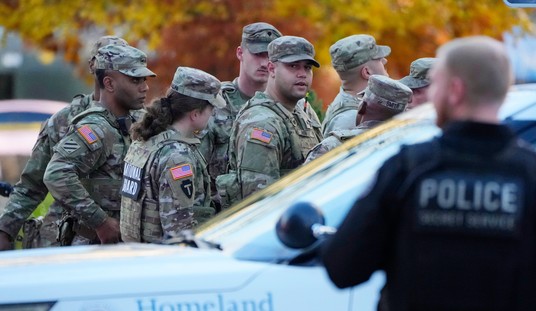Pat Buchanan interviewed Joe Lieberman, the latter from a John McCain campaign office, and demanded an answer as to why we haven’t started singing McCain’s version of Barbara Ann. Lieberman seems somewhat taken aback by Buchanan’s enthusiasm for military engagement against Iran, and understandably so given Buchanan’s relentless isolationism in almost any other context:
Amusingly, Pat Buchanan brings up the example of Cambodia during the Vietnam War, one of the escalations that made the Vietnam War so unpopular and one of the points occasionally used by isolationists to show how interventions can get out of hand. Offering Nixon’s war policy in 2008 to the McCain campaign doesn’t sound like a friendly act on Buchanan’s part. Is this the man who argued that the Iraq War was set in motion by a cabal of neoconservatives, especially Jewish conservatives, who had Israel’s interests more in mind than America’s?
The difference between Cambodia then and Iran now is that Iran could seriously threaten our interests in the region, where Cambodia was less a threat and more of a nuisance. Cambodia didn’t have medium- and long-range missiles that could hit targets thousands of miles away, nor could it shut down a large part of petroleum exports by closing the Straits of Hormuz. Iran qualitatively differs from Cambodia in that an attack on Iran would likely lead to a regional war for which we have too few military assets and absolutely no political will to fight — thanks in large part to people like Pat Buchanan.
The Bush administration needs to put more pressure on Iran, but launching air strikes into Iranian territory would only bolster the mullahcracy’s grip on power. We need to act against their proxies, which we already have done in supporting Nouri al-Malik in Basra and Sadr City. Iran knows this, which is why Tehran demanded an end to operations in both places before engaging in security talks. If the time comes for airstrikes, then they have to be massive and conclusory. If we leave their military with the ability to respond, we will quickly find out that they have more resources and willingness to apply them than did Saddam Hussein in 2003.
Update (AP): Note to Buchanan: Destroying Iran’s nuke facilities presupposes that we can find all of them, which isn’t at all certain given what a good job Syria did at hiding theirs.
According to the ISIS report to be released this week, the fake roof was just the start. Syrian engineers went to “astonishing lengths” to hide cooling and ventilation systems, power lines and other features that normally are telltale signs of a nuclear reactor, authors David Albright and Paul Brannan wrote.
For example, the main building appears small and shallow from the air, but it was evidently built over large underground chambers — tens of meters in depth — that were large enough to house the nuclear reactor, as well as a reserve water-storage tank and pools for spent fuel rods, the report said.







Join the conversation as a VIP Member